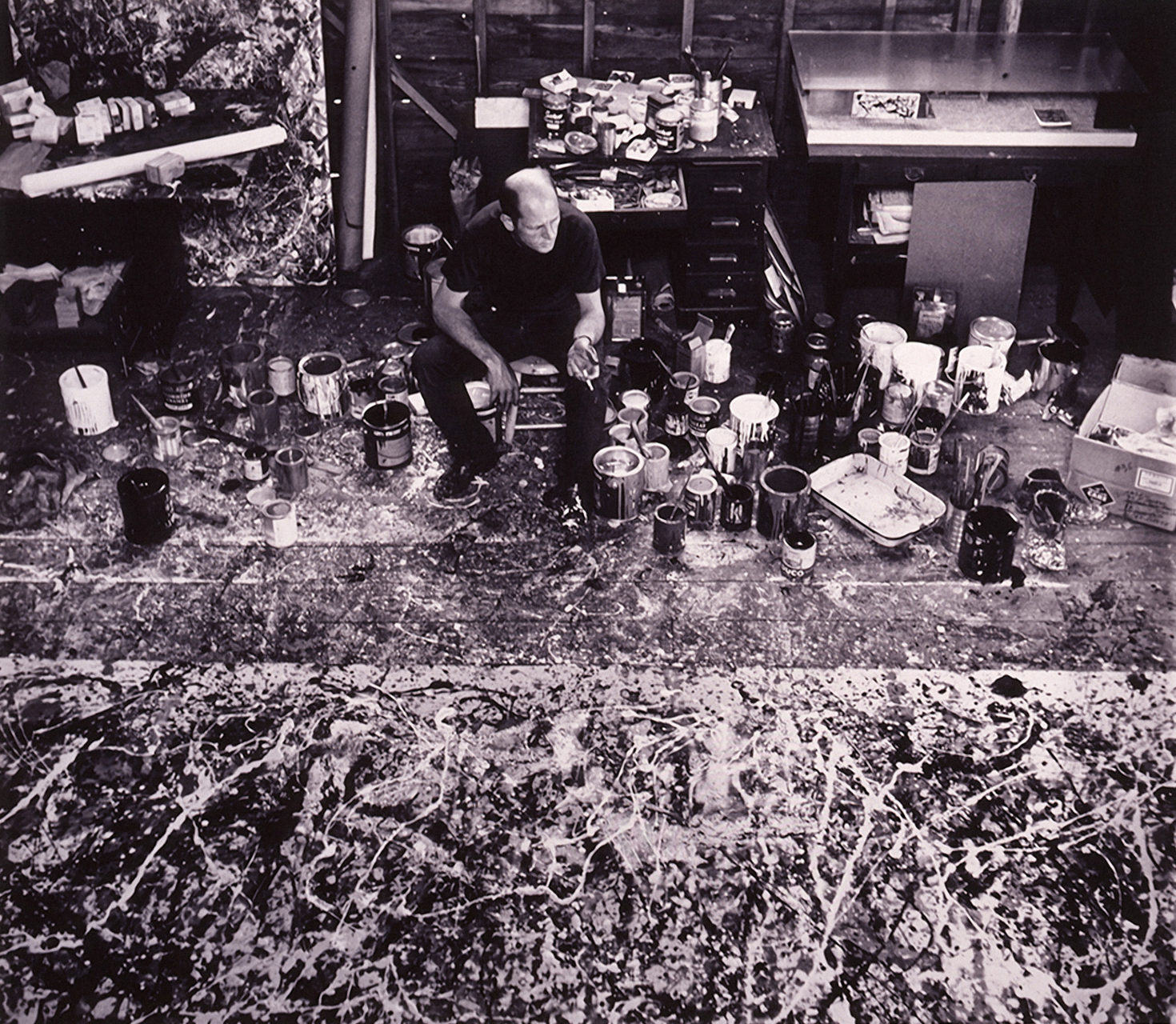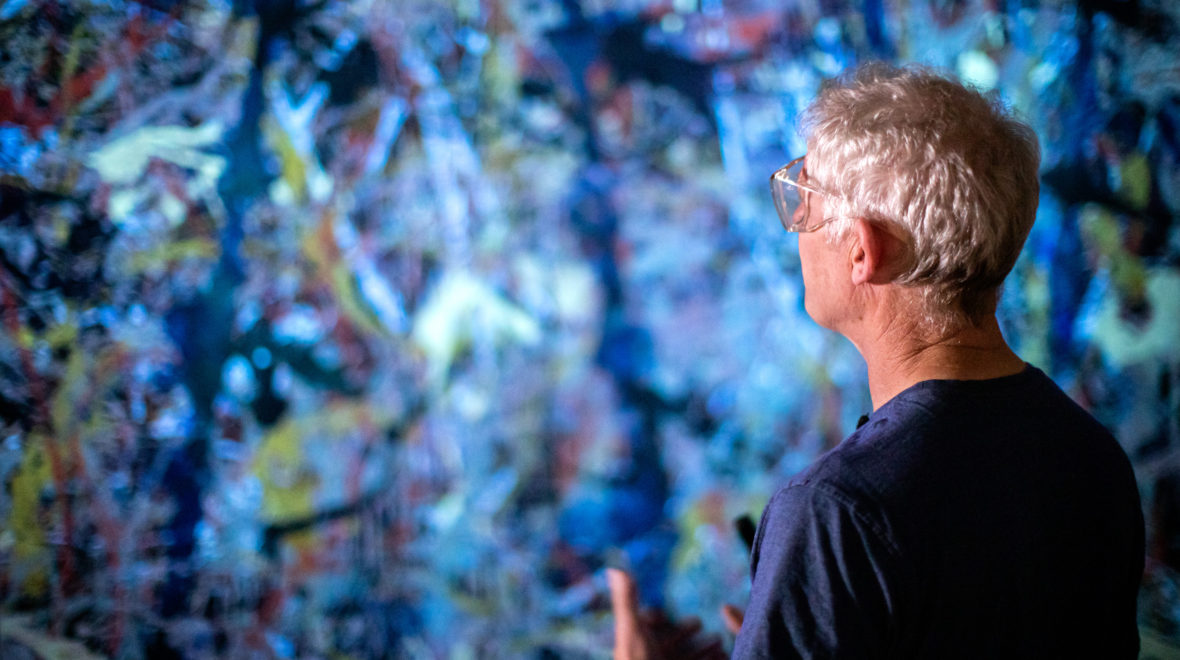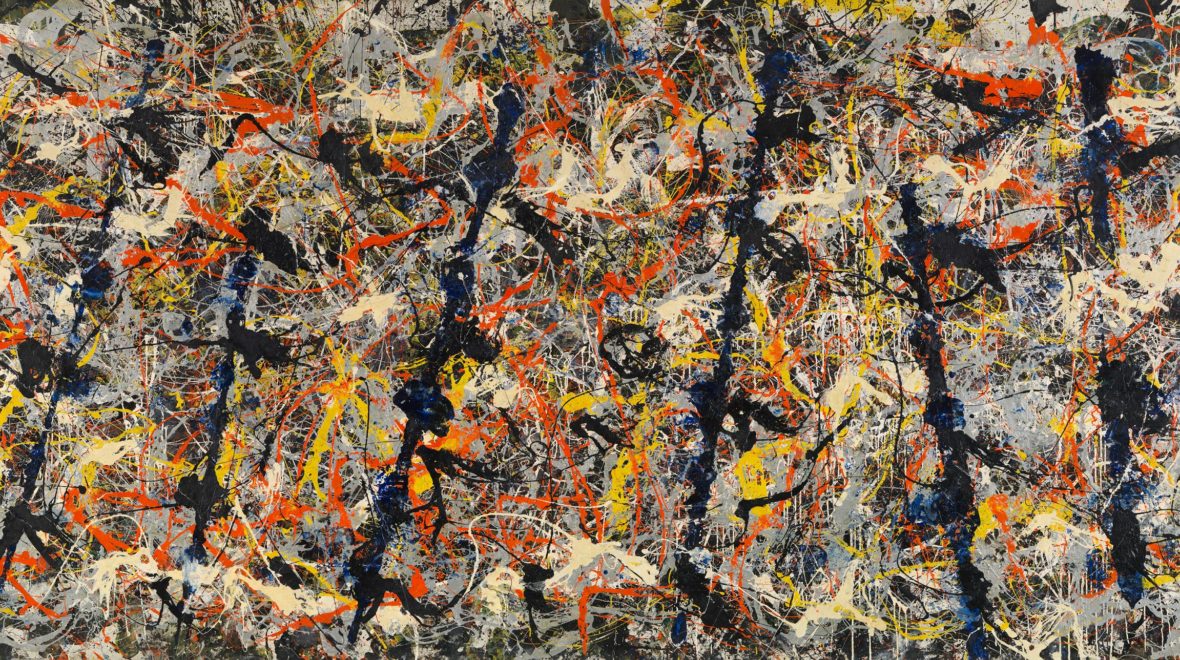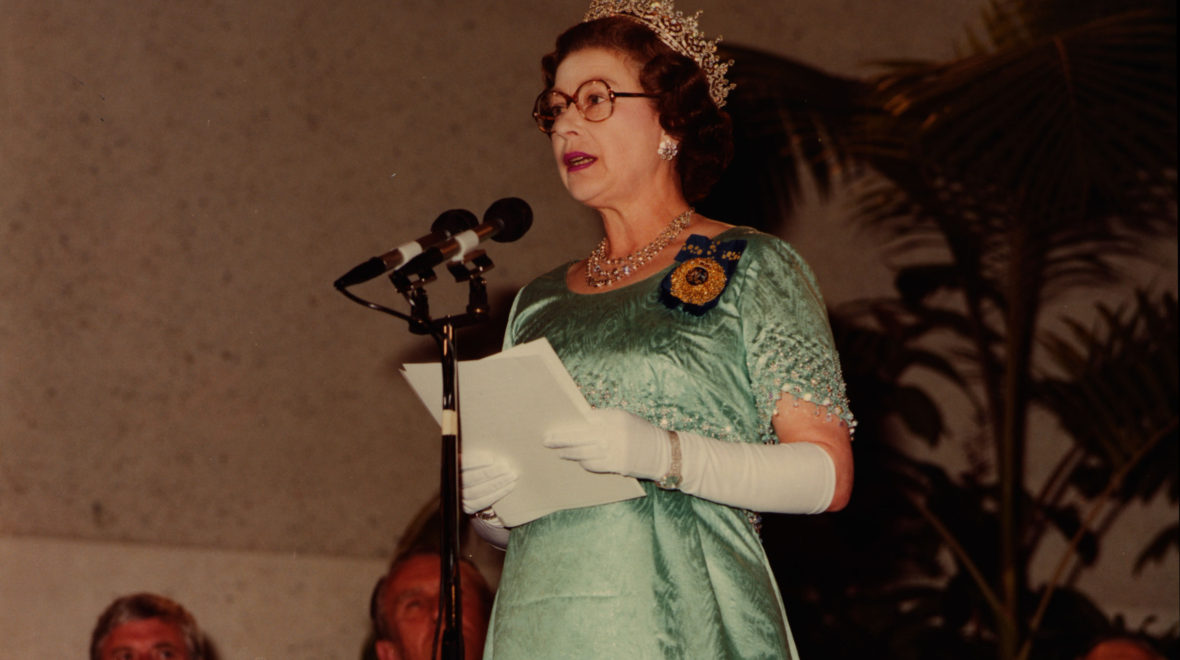Born: Cody, Wyoming, USA, 1912
Died: East Hampton, New York, USA, 1956
Jackson Pollock was born on 28 January 1912 in Cody, Wyoming, and grew up in Arizona and California. In 1930 he moved to New York and enrolled at the Art Students League in the class of Thomas Hart Benton. He joined the Federal Art Project of the Works Progress Administration in 1935 and the following year worked in the ‘experimental workshop’ set up in New York by the Mexican muralist David Alfaro Siqueiros. In 1942 Pollock exhibited in a group exhibition at McMillen Gallery, and in the Artists for Victory exhibition at the Metropolitan Museum of Art. His first solo exhibition was at Peggy Guggenheim’s Art of This Century Gallery in 1943. In 1944 The she-wolf was purchased by the Museum of Modern Art, New York, and The guardians of the secret was included in the touring exhibition Abstract and Surrealist Art in the United States.
In 1945 Pollock married Lee (Lenore) Krasner and moved to The Springs, East Hampton, New York, on the southern fork of Long Island. He also signed a new contract with Peggy Guggenheim and exhibited at her Art of This Century Gallery each year until 1947, when the gallery was closed and Pollock’s contract taken over by the Betty Parsons Gallery. In 1950 his work was shown abroad for the first time: at the Venice Biennale; in the exhibition Amerika Schildert at the Stedelijk Museum, Amsterdam, and in a solo exhibition of works drawn from the collection of Peggy Guggenheim at Ala Napoleonica (Museo Correr) in Venice. In 1952 Pollock joined the Sidney Janis Gallery and held solo exhibitions there in 1952, 1954 and 1955.
His work was shown in Paris at Studio Paul Facchetti and in a group exhibition 12 Peintres et Sculpteurs Américaines Contemporaines at the Musée National d’Art Moderne, Paris, in 1953. Pollock died in a car accident on 11 August 1956 in East Hampton.

Jackson Pollock at work in his studio in 1950 photographed by Hans Namuth
More



